When it comes to perennials, phlox is one of those garden gems that shines even brighter when paired with the right neighbors. Whether you grow the tall, fragrant garden phlox (Phlox paniculata) or the low-growing creeping phlox (Phlox subulata), the plants around them can make a big difference in their health, longevity, and aesthetic impact.
Companion planting isn’t just for vegetables; it’s a gardener’s secret to building a thriving, balanced, and visually stunning flower garden.
In short, the best companion plants for phlox are those that complement its colors, share its growing preferences, and help deter pests, but the real magic comes in how these plants work together to create year-round garden beauty.
Table of Contents
Why Companion Plants for Phlox Matter
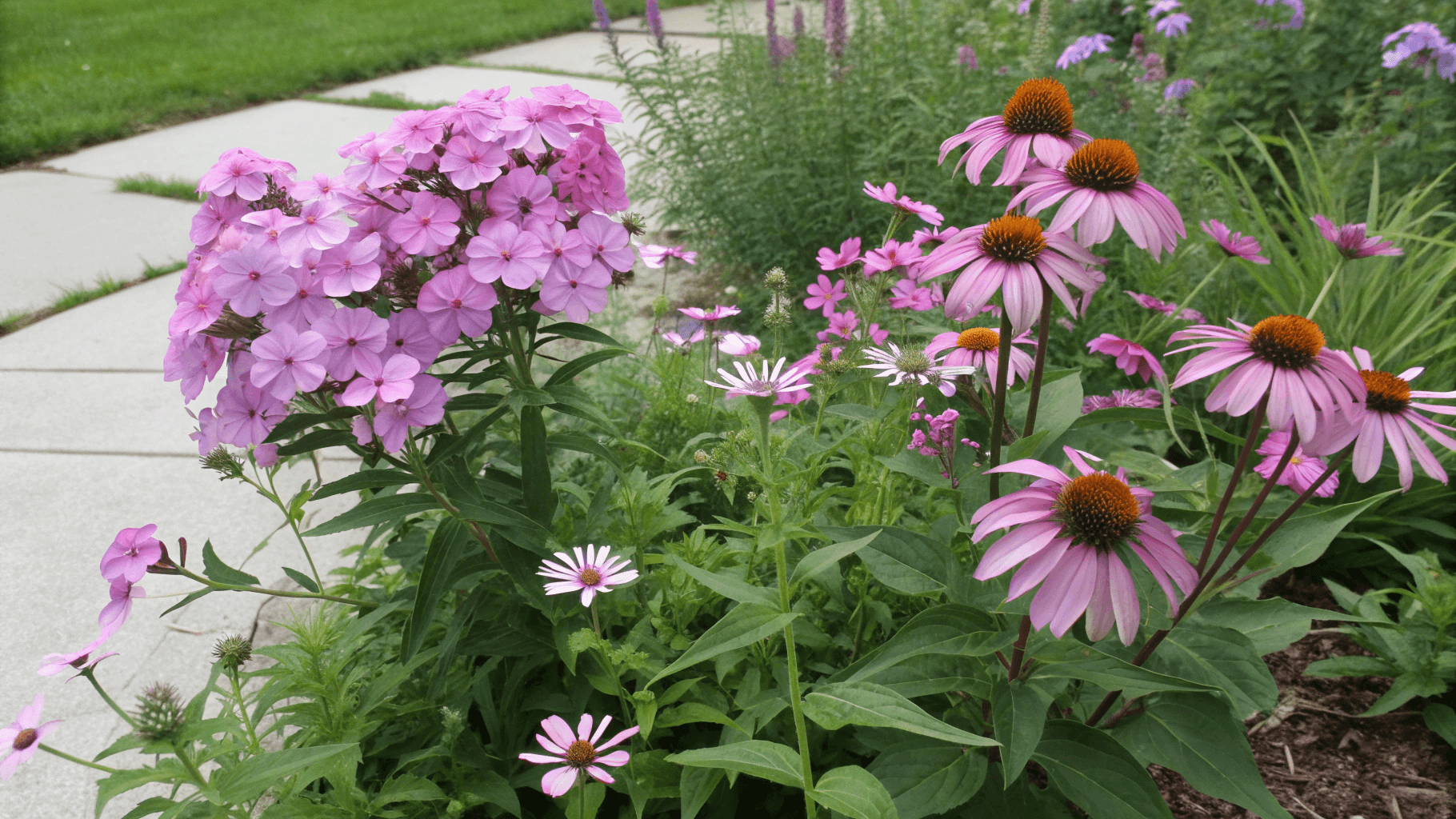
Phlox is a beloved perennial for good reason: it’s hardy, adaptable, and adds a romantic splash of color from spring to late summer. But like any plant, it thrives best when surrounded by friendly companions that bring balance and support.
- Color and Texture Harmony:
Phlox produces clusters of blooms that look best when offset by contrasting textures, think daisy-like petals or fine grassy foliage. The right mix enhances your garden’s depth and makes the colors pop. - Shared Growing Conditions:
Phlox prefers full sun to partial shade and moist, well-drained soil. Companion plants that share these needs help maintain uniform moisture and prevent root competition. - Natural Pest Control:
Some plants act as natural deterrents for pests like spider mites and powdery mildew, two common enemies of phlox. Planting companions strategically can help reduce the need for chemical treatments. - Extended Bloom Season:
By mixing phlox with plants that bloom earlier or later, you can enjoy continuous color throughout the growing season, keeping your garden vibrant for months.
If you’re new to growing phlox, check out this detailed guide on how to grow phlox to ensure your plants start strong before pairing them with companions.
Best Companion Plants for Tall Garden Phlox
Tall garden phlox (Phlox paniculata) is a showstopper with fragrant, full blooms that tower over many other perennials. To make it even more breathtaking, pair it with plants that can keep up with its height, color intensity, and sunlight needs.
1. Coneflowers (Echinacea)
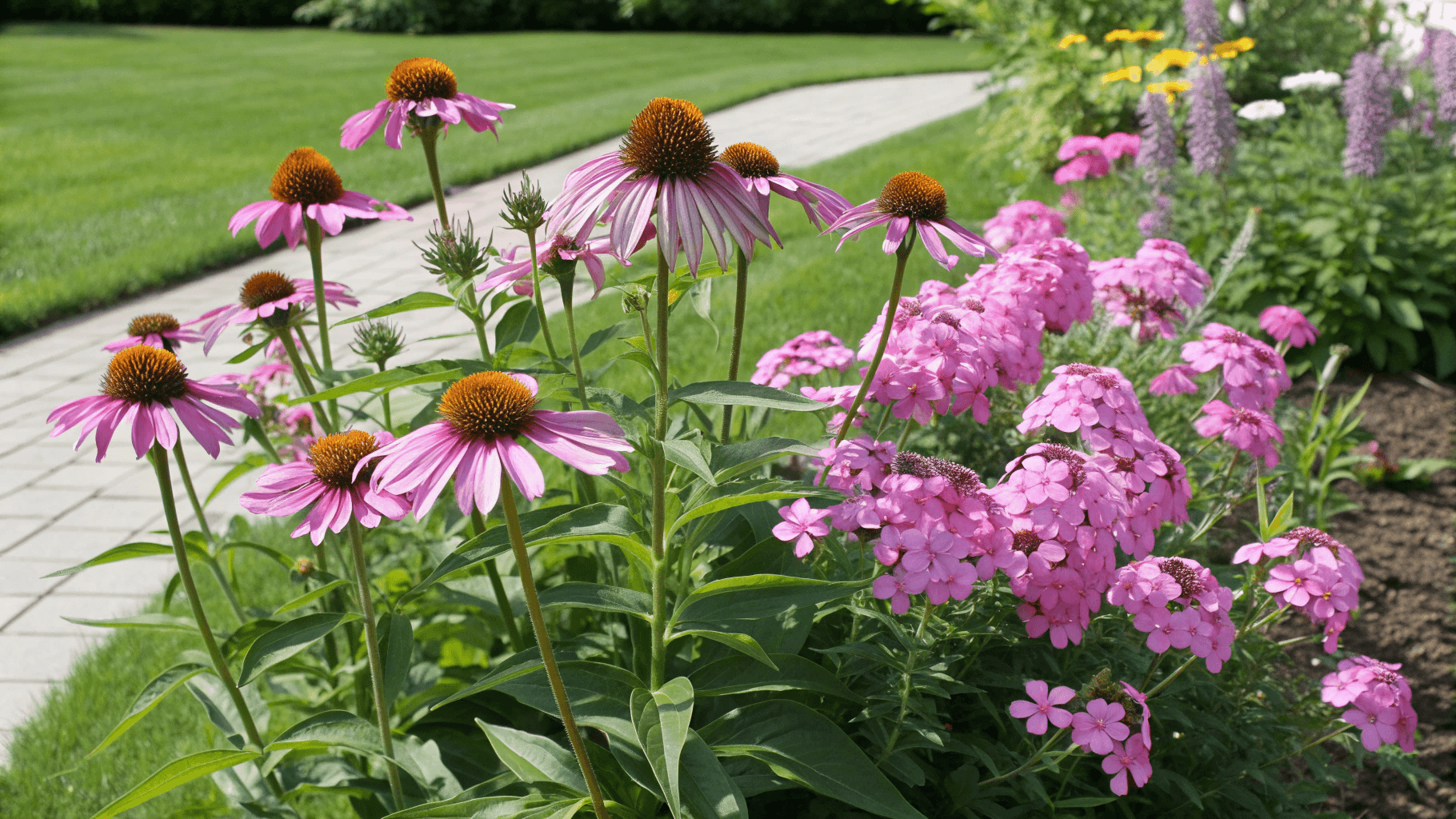
Coneflowers and tall phlox are a match made in garden heaven. Both thrive in sunny locations and prefer similar soil conditions. Their upright forms complement each other beautifully, with coneflowers adding bold daisy-like blooms that contrast perfectly against the clusters of phlox flowers.
Plus, coneflowers attract butterflies and bees, boosting pollination for your whole garden. The mix of pink, purple, and white phlox with the golden centers of coneflowers creates a dazzling late-summer palette.
2. Black-Eyed Susans (Rudbeckia)
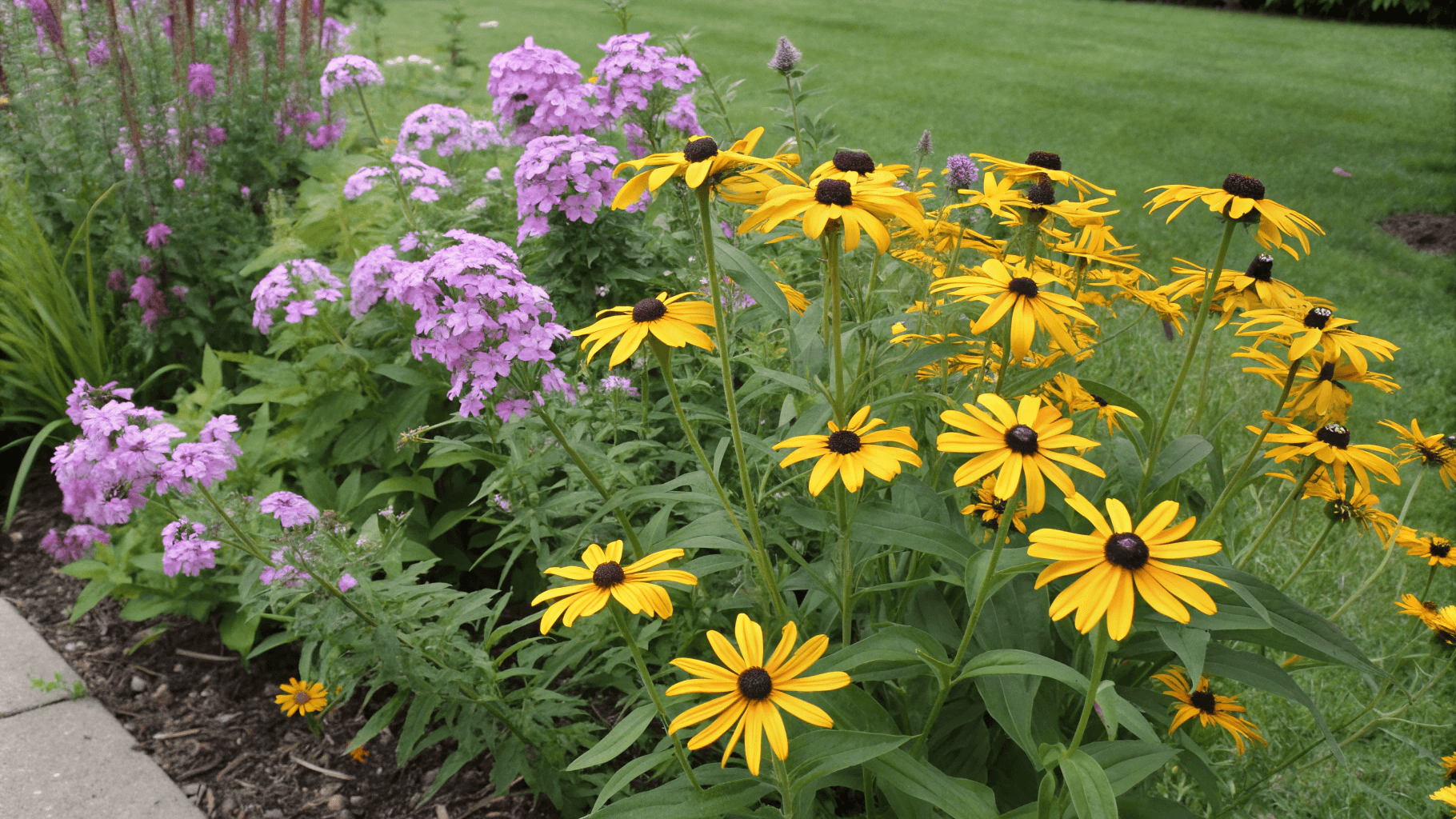
Black-eyed Susans bring cheerful yellow blooms that look radiant beside pink or lavender phlox. Together, they form a striking color combination that feels like summer bottled up in a flowerbed.
Both are hardy perennials that tolerate heat and share similar watering needs. They also help fill in any bare spots, giving your garden a lush, full look.
3. Shasta Daisies (Leucanthemum × superbum)
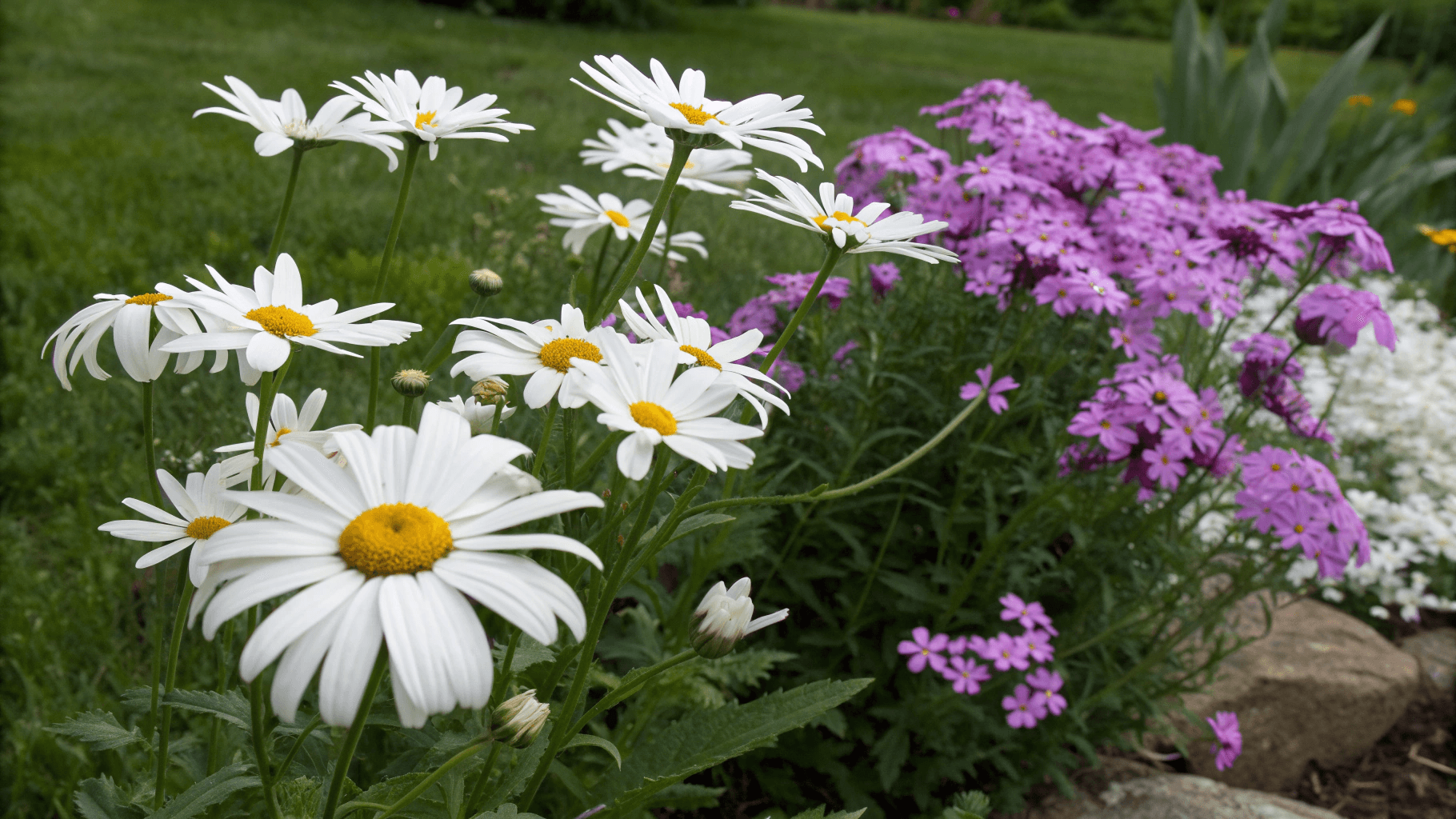
Shasta daisies provide crisp white blooms that perfectly offset the vibrant shades of phlox. Their sturdy stems help balance the softer texture of phlox blossoms, and they bloom around the same time, making them ideal companions in mixed perennial borders.
When paired together, these plants create a timeless cottage garden charm that never goes out of style.
Want to discover more about different phlox species to match your favorite garden companions? Take a look at phlox varieties.
Best Companion Plants for Creeping Phlox
Creeping phlox (Phlox subulata) is a low-growing, mat-forming perennial that paints the ground with carpets of pink, lavender, and white in early spring. Because it hugs the soil, the best companions are those that won’t overshadow it but will continue the color story after it finishes blooming.
1. Sedum (Stonecrop)
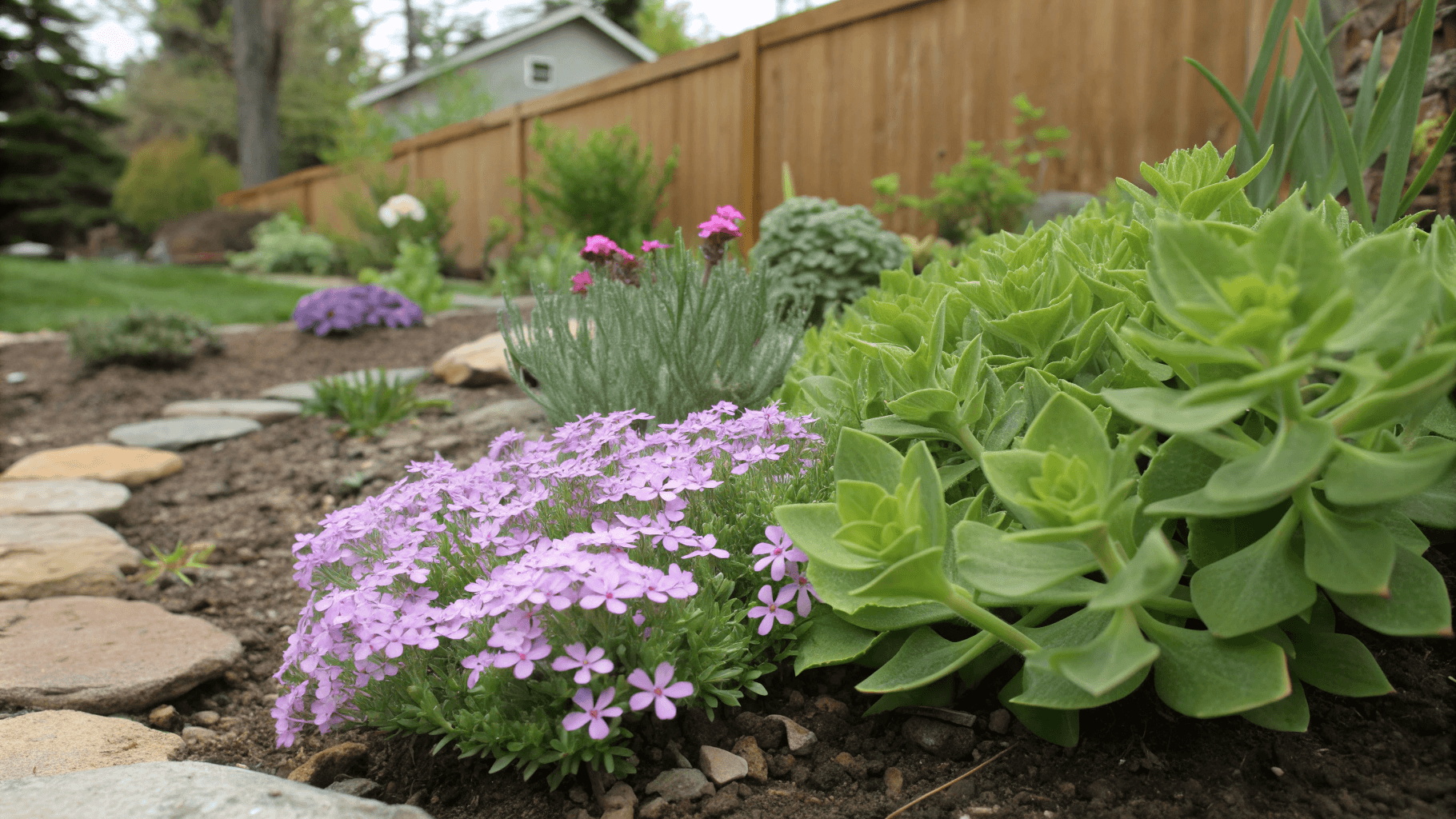
Sedum and creeping phlox make a natural pair in rock gardens or sunny slopes. Sedum’s fleshy leaves add texture contrast and stay attractive long after phlox’s flowers fade. Both plants thrive in well-draining soil and can tolerate periods of drought, perfect for low-maintenance landscapes.
2. Creeping Thyme (Thymus serpyllum)
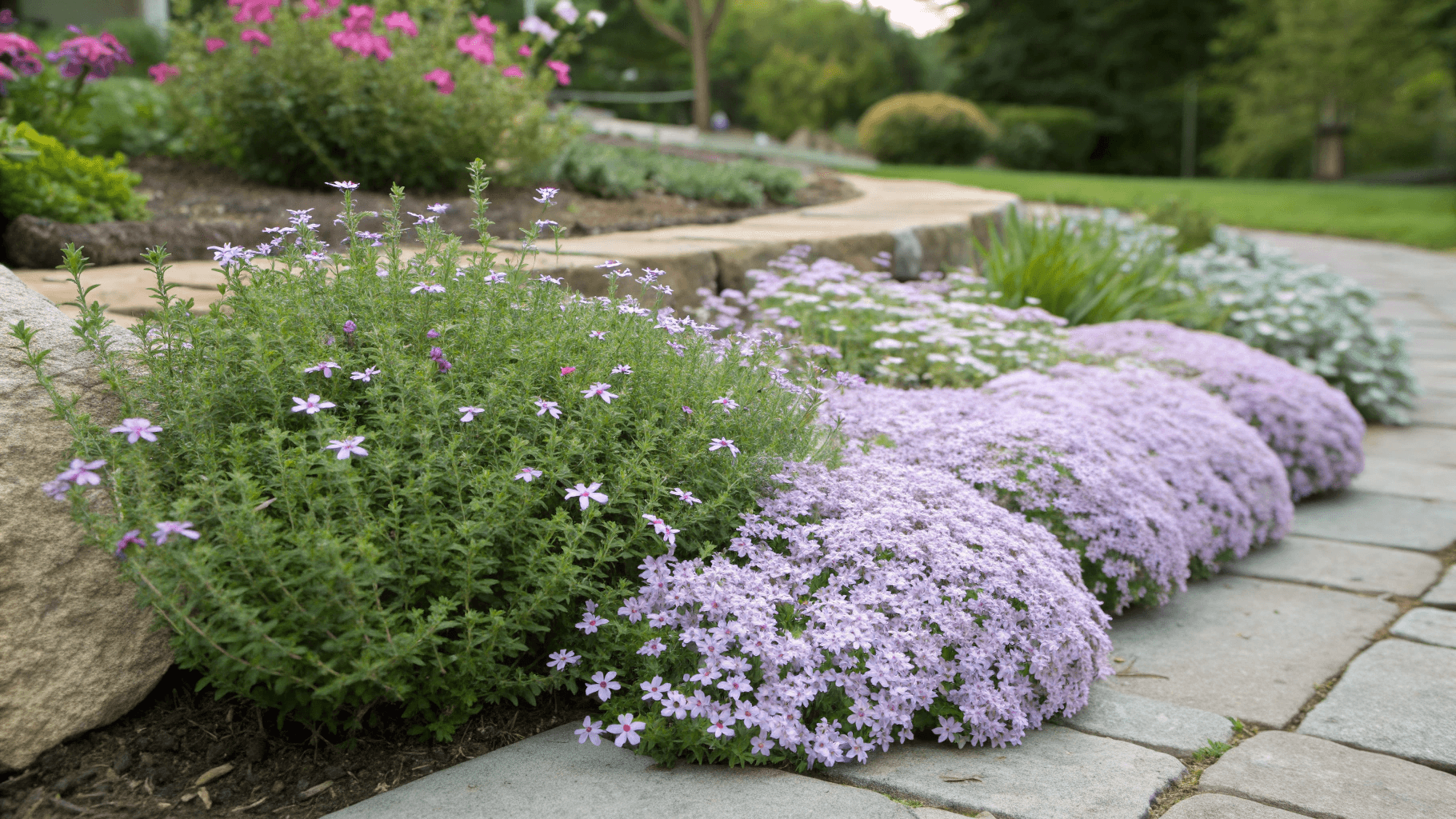
For a fragrant and practical groundcover combo, plant creeping thyme alongside your phlox. It fills in gaps, suppresses weeds, and releases a pleasant aroma when walked on. Both are sun-lovers that spread nicely without becoming invasive.
Plus, thyme attracts pollinators like bees and butterflies, enhancing biodiversity in your garden.
3. Dianthus (Pinks)
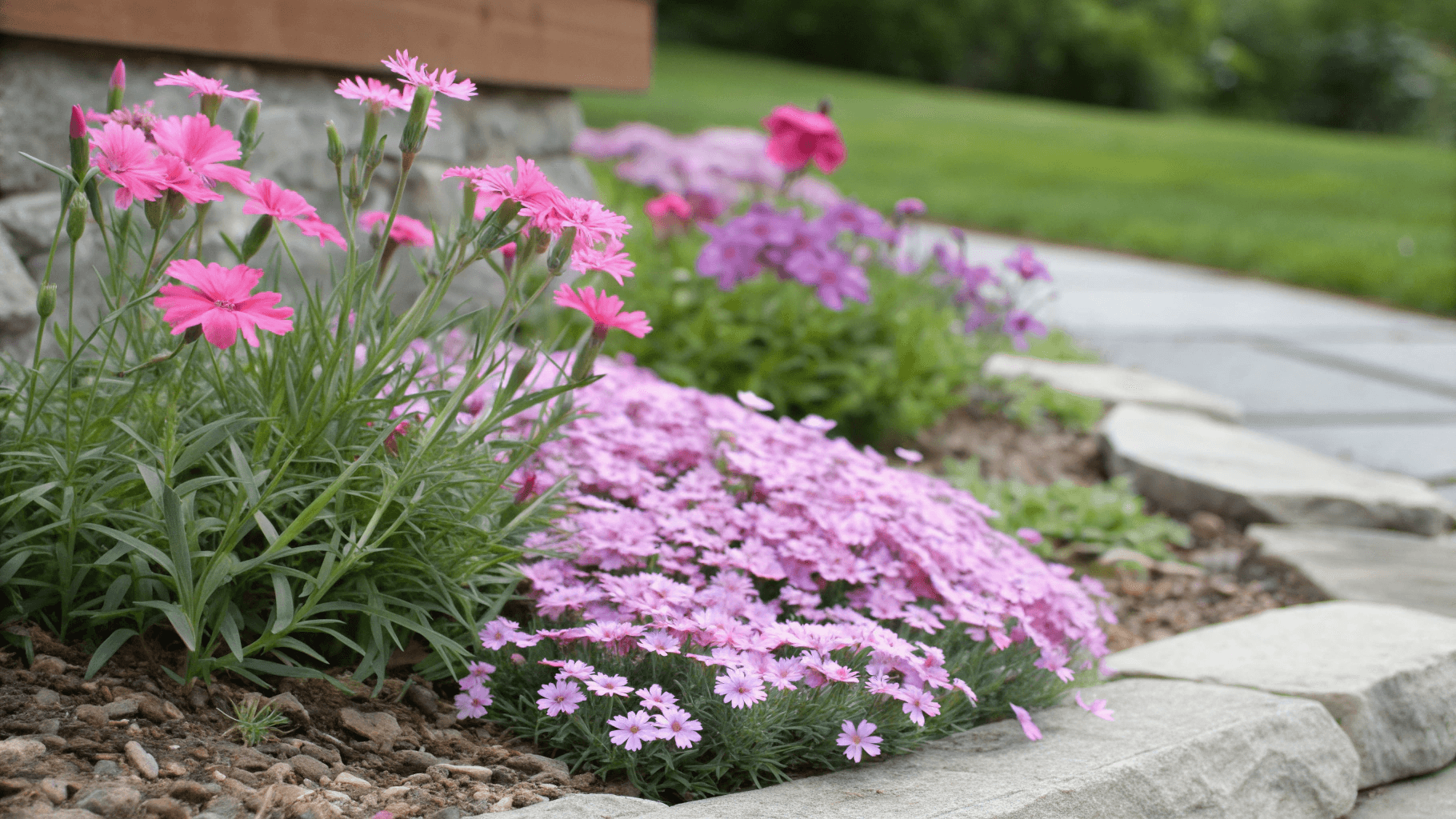
Dianthus adds charm with its compact growth and fringed petals. It loves the same sunny, well-drained spots as creeping phlox and continues to bloom after phlox’s spring display has ended. Together, they create a seamless flow of color from early spring through early summer.
If you’re interested in multiplying your creeping phlox for more coverage, here’s a helpful guide on how to propagate phlox.
Plants to Avoid Pairing with Phlox (Competition and Spacing Issues)
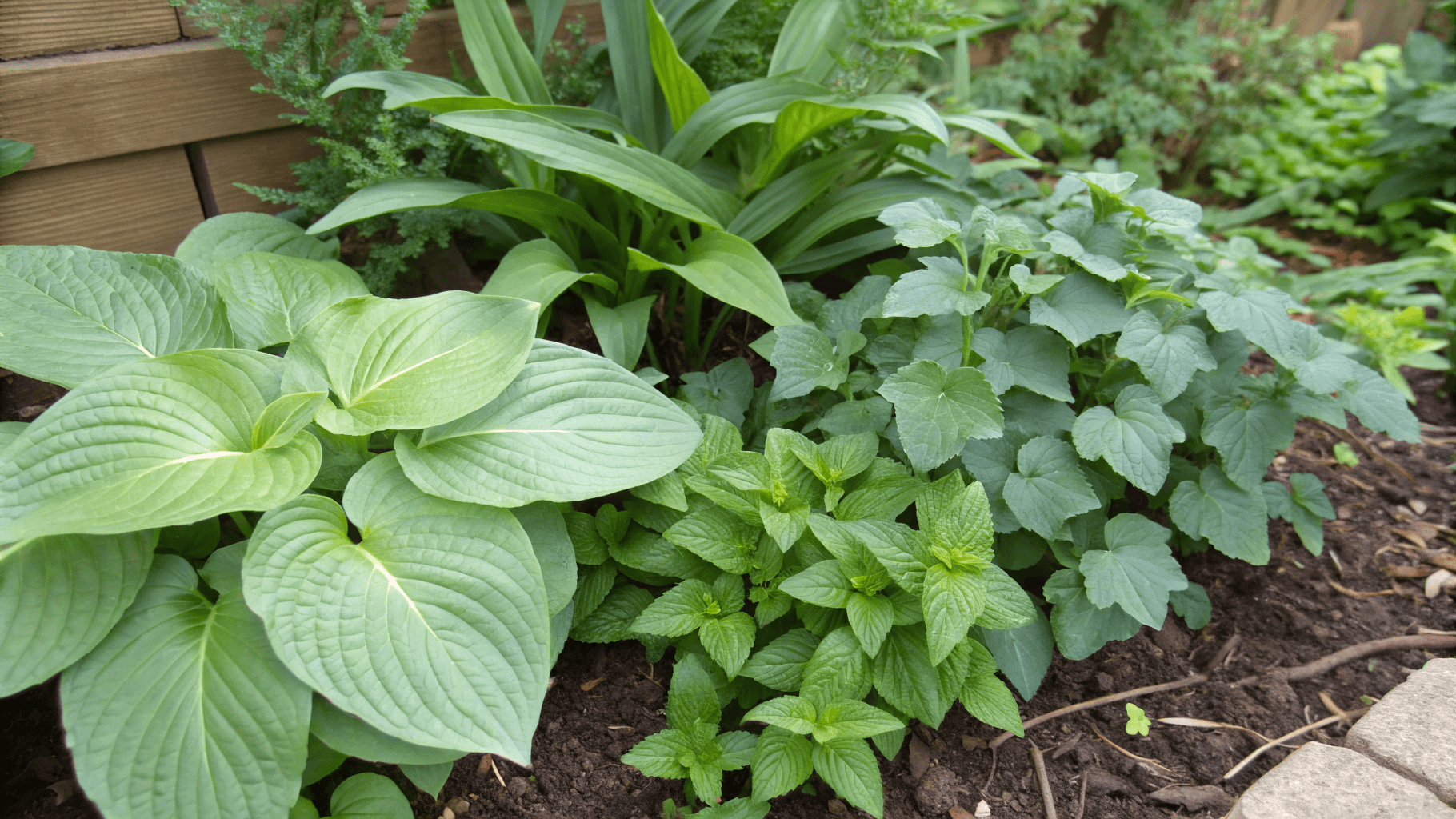
While phlox is a team player in most garden settings, there are a few plants that don’t make ideal companions. Avoid pairing phlox with aggressive spreaders or moisture-hogging plants that compete for space and nutrients.
- Hostas: Though beautiful, hostas prefer shady, moist conditions that can encourage mildew in phlox.
- Mint and other invasive herbs: They spread too aggressively and can quickly overtake phlox roots.
- Tall ornamental grasses: Their dense roots compete for nutrients and water, often leaving phlox weakened.
- Heavy groundcovers like vinca or ivy: These can smother creeping phlox, preventing it from spreading properly.
Giving your phlox enough breathing room is key to preventing fungal diseases and maintaining airflow between plants.
Garden Design Ideas Using Companion Plants for Phlox
One of the best things about phlox is how versatile it is in design. Whether you’re going for a wild, natural look or a structured garden border, there’s a phlox variety that fits perfectly. Here are a few design ideas to inspire your planting combinations:
1. Cottage Garden Charm
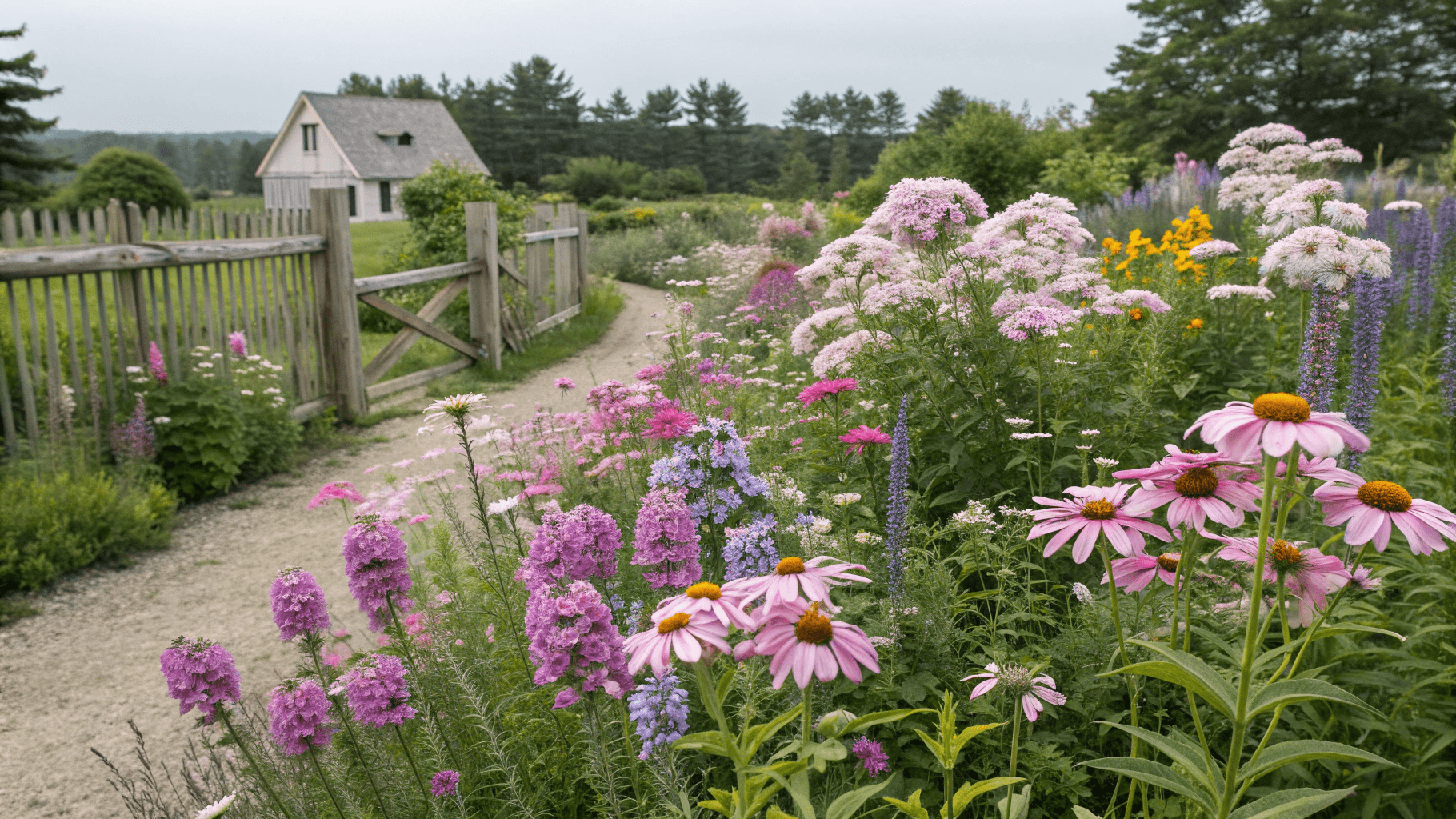
Combine tall garden phlox with coneflowers, daisies, and delphiniums for that storybook cottage garden look. The mix of soft pinks, purples, whites, and yellows feels effortless yet deeply romantic. Add in a few lavender plants for fragrance and pollinator appeal.
2. Perennial Border Garden
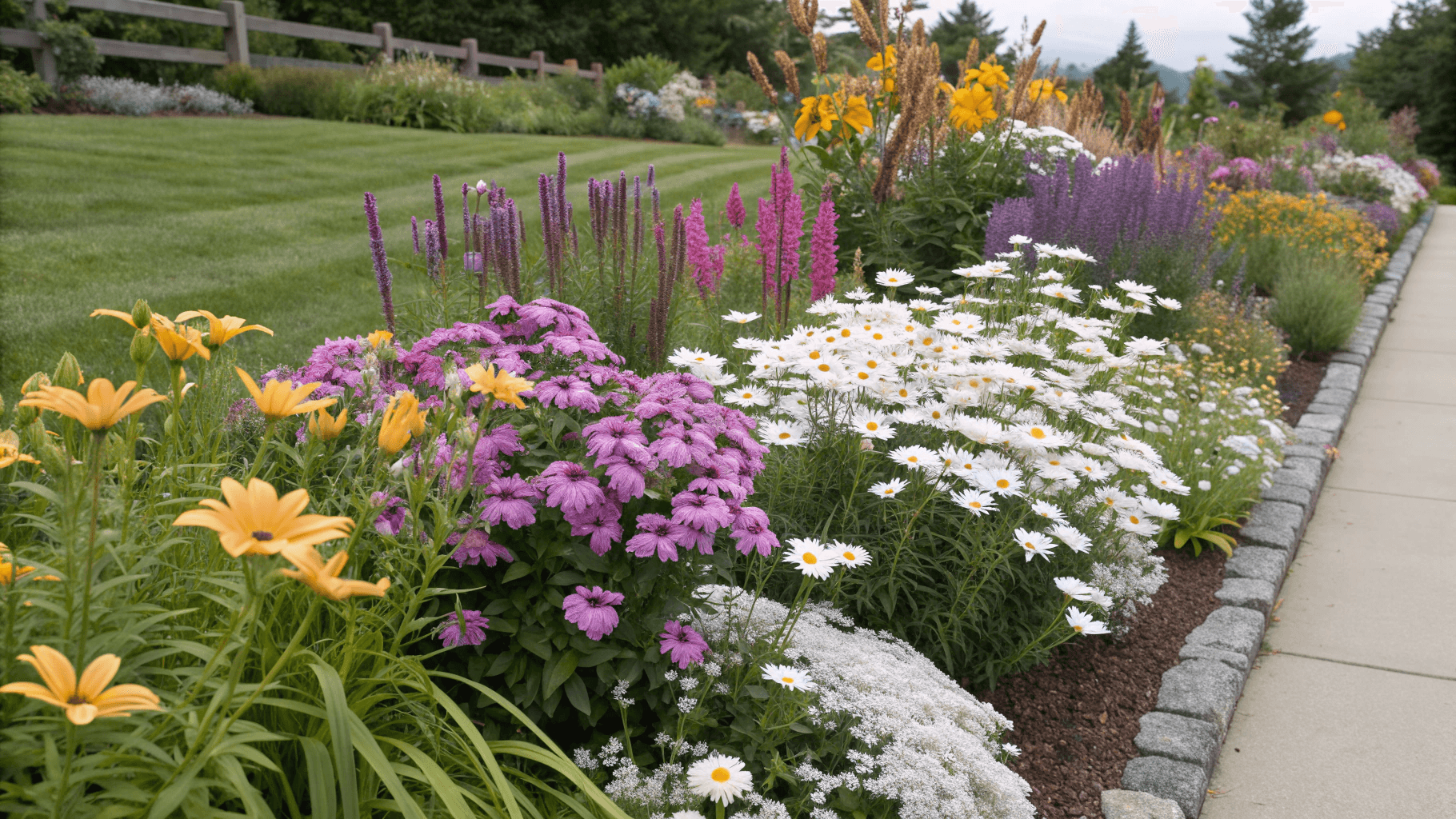
For a polished perennial border, mix garden phlox with Shasta daisies, salvias, and daylilies. Use phlox as the mid-height filler that ties the bed together, providing continuous blooms from mid-summer through early fall.
3. Rock Garden Magic
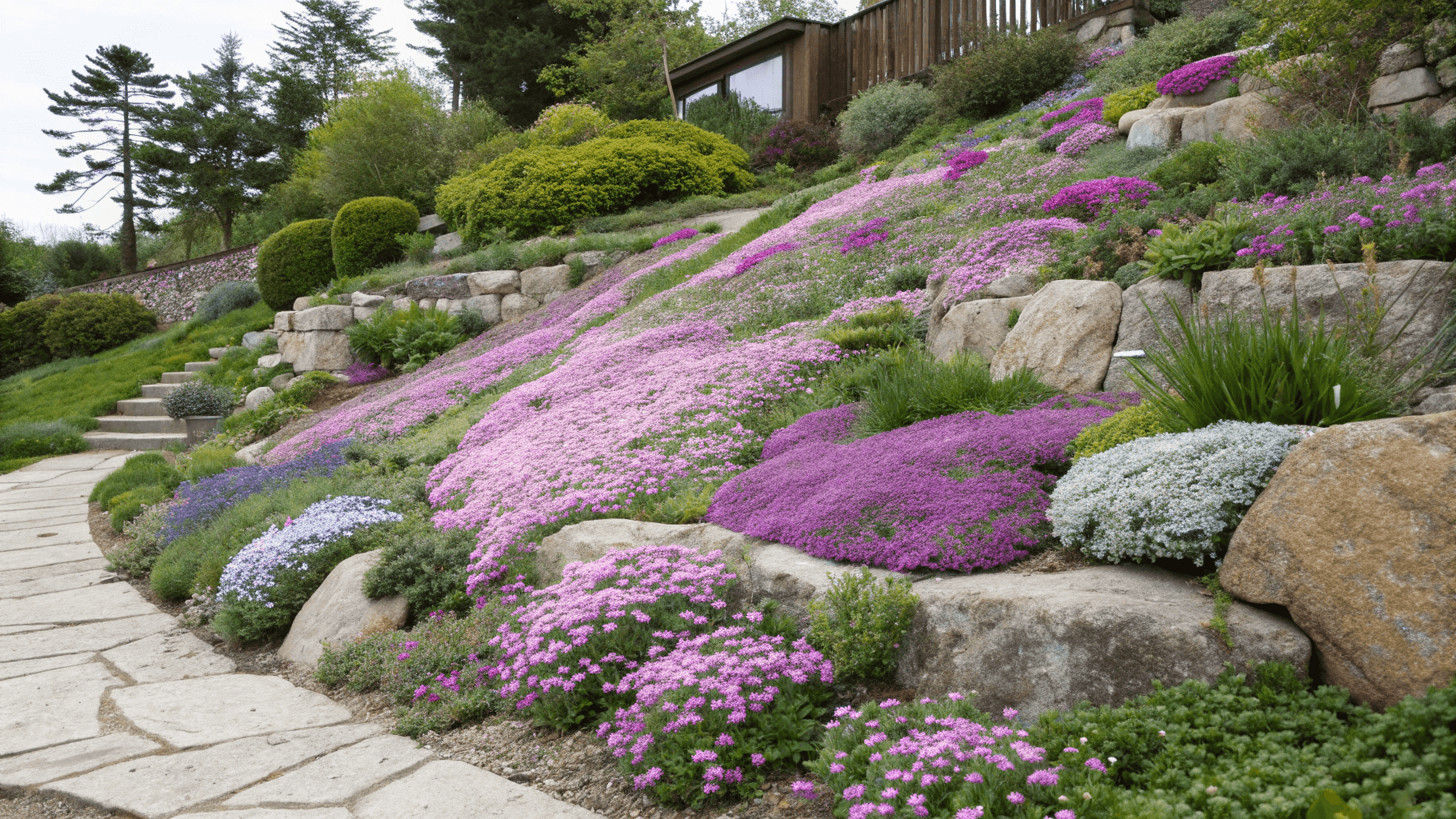
Creeping phlox shines in rock gardens and on slopes. Pair it with sedum, thyme, and dwarf irises for a cascading, layered effect that turns otherwise plain areas into vibrant spring spectacles.
4. Pollinator Paradise
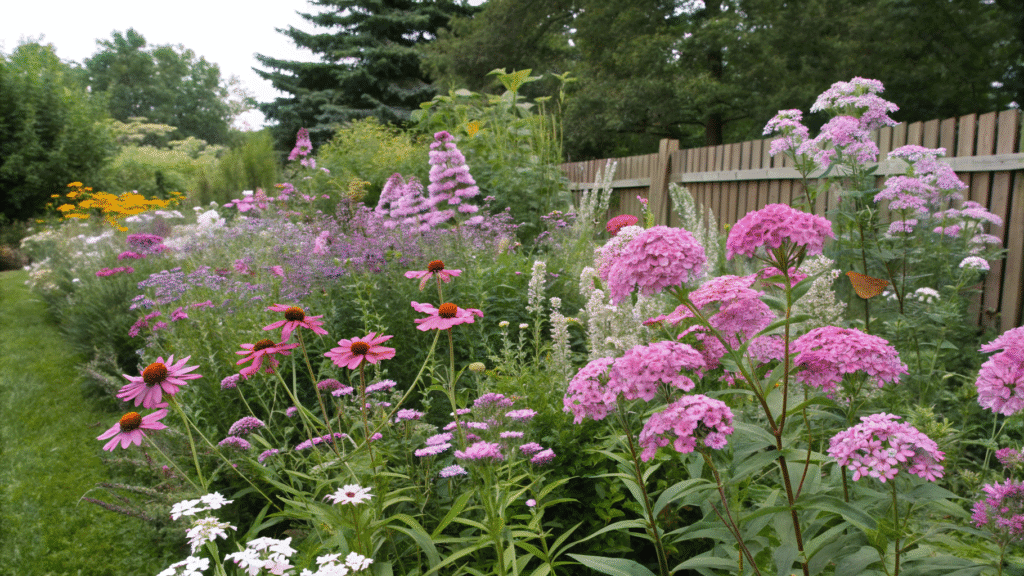
Mix multiple phlox types, tall and creeping, with bee balm, coneflowers, and yarrow. These combinations draw bees, butterflies, and hummingbirds, ensuring your garden buzzes with life all season long.
If you’re curious about how to start your phlox collection from scratch, you can follow this step-by-step guide on how to grow phlox from seed.
Conclusion
Phlox is one of the most rewarding perennials you can grow, vibrant, reliable, and endlessly adaptable. But to help it truly thrive, companion planting is the key. The right neighbors not only enhance your garden’s beauty but also support healthy growth, pest resistance, and seasonal balance.
By pairing tall garden phlox with bold bloomers like coneflowers and daisies or creeping phlox with low-growers like sedum and thyme, you’ll create dynamic plant pairings that look beautiful year after year.

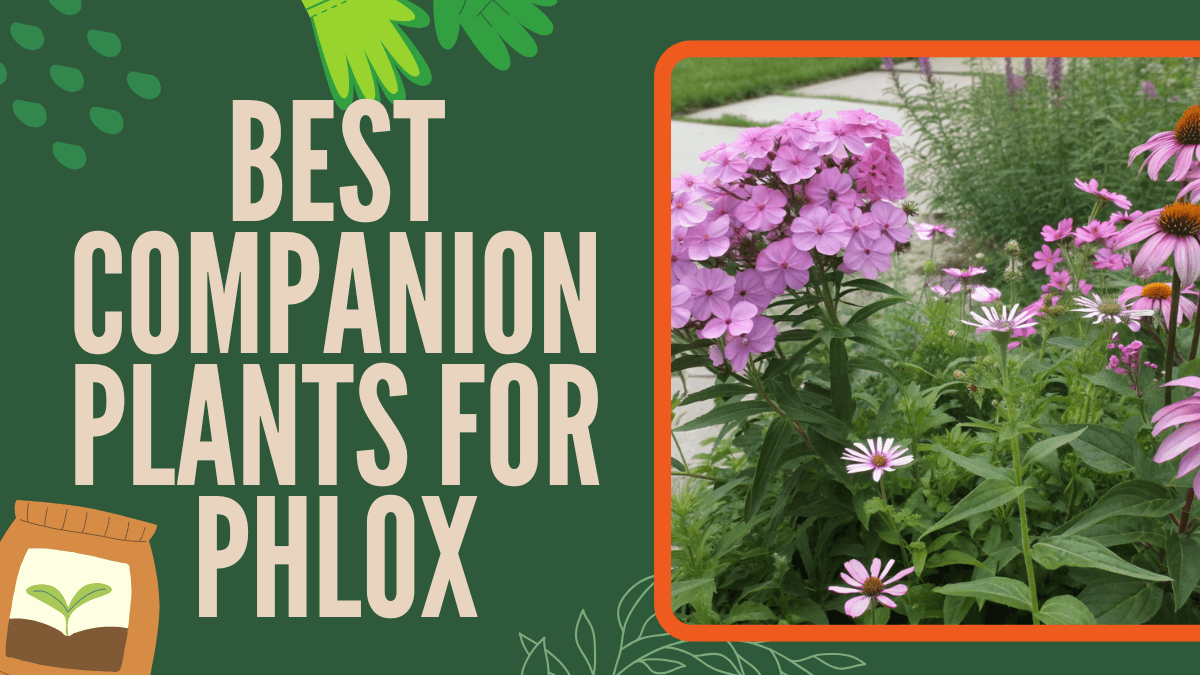
 ChatGPT
ChatGPT
 Perplexity
Perplexity
 Claude
Claude
Leave a Reply